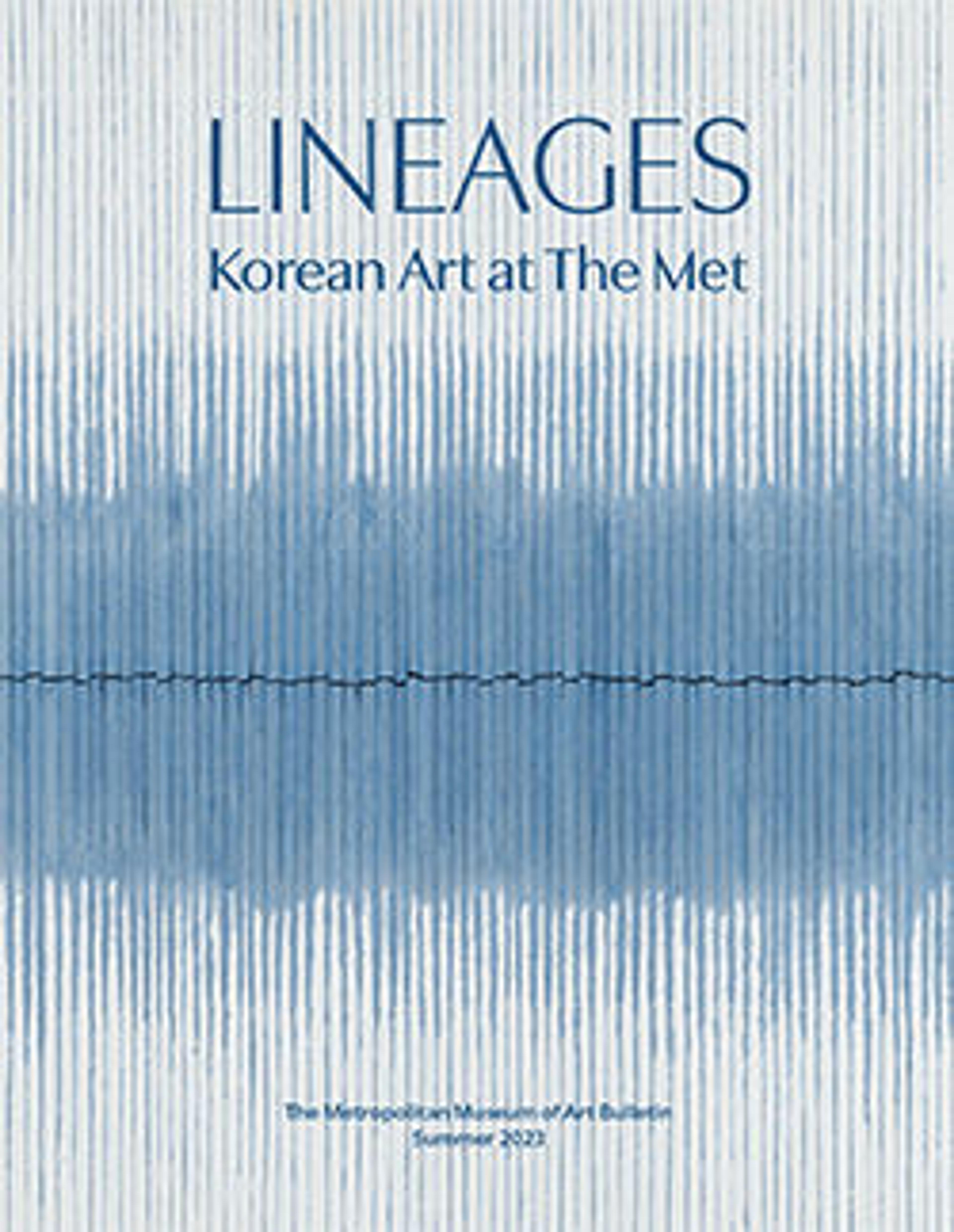Amitabha and Kshitigarba
The combination of the Amitabha Buddha (Korean: Amita) and the bodhisattva Kshitigarbha (Korean: Jijang)—on the right and left, respectively, standing under a canopy—is the only known example of this iconography in Goryeo Buddhist painting. A more typical composition features these two figures with the bodhisattva Avalokiteshvara (Korean: Gwaneum), forming a triad in which Amitabha is the central deity, or just the two bodhisattvas. Both deities in this painting enjoyed a strong following during the Goryeo dynasty due to the popularity of Pure Land Buddhism. Amitabha Buddha offered the promise of easy salvation and entry into the Western Paradise; Kshitigarbha provided guidance and redemption in death and the afterlife.
Buddhist paintings of the Goryeo dynasty were renowned for their delicacy, refinement, and exquisitely rendered gold-painted designs. Pigments were applied to the front and back of the silk, intensifying their hues and luminosity (though some have faded from exposure to light over time).
Buddhist paintings of the Goryeo dynasty were renowned for their delicacy, refinement, and exquisitely rendered gold-painted designs. Pigments were applied to the front and back of the silk, intensifying their hues and luminosity (though some have faded from exposure to light over time).
Artwork Details
- 아미타불과 지장보살도 고려
- 阿彌陀佛・地藏菩薩圖 高麗
- Title: Amitabha and Kshitigarba
- Artist: Unidentified artist
- Period: Goryeo dynasty (918–1392)
- Date: first half of the 14th century
- Culture: Korea
- Medium: Hanging scroll; ink and color on silk
- Dimensions: Image: 37 1/4 × 21 7/8 in. (94.6 × 55.6 cm)
Overall with mounting: 72 3/8 × 29 5/8 in. (183.8 × 75.2 cm)
Overall with knobs: 72 3/8 × 31 3/4 in. (183.8 × 80.6 cm) - Classification: Paintings
- Credit Line: Rogers Fund, 1913
- Object Number: 13.5
- Curatorial Department: Asian Art
More Artwork
Research Resources
The Met provides unparalleled resources for research and welcomes an international community of students and scholars. The Met's Open Access API is where creators and researchers can connect to the The Met collection. Open Access data and public domain images are available for unrestricted commercial and noncommercial use without permission or fee.
To request images under copyright and other restrictions, please use this Image Request form.
Feedback
We continue to research and examine historical and cultural context for objects in The Met collection. If you have comments or questions about this object record, please complete and submit this form. The Museum looks forward to receiving your comments.
